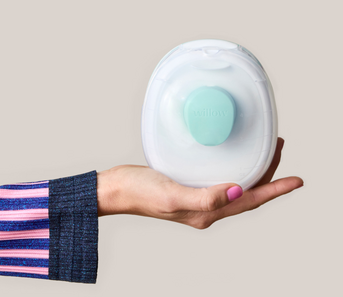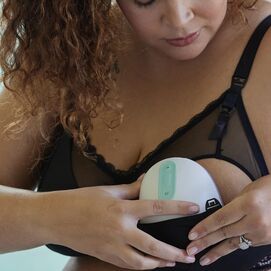While it can take some time to adjust to breastfeeding, your and your baby's bodies have some innate breastfeeding skills.
As you begin to find your groove with breastfeeding—don’t expect to immediately know what you are doing!—gaining a basic understanding of how these reflexes work (and interact) can provide some foundational guide posts.
How your body prepares to feed your baby
Throughout your pregnancy, your breast tissue and nipples have been preparing to feed your baby.
Your areolas change in two ways to help your baby do the “breast crawl” after birth: They tend to darken, making them easier for your newborn to see, and they produce a scent similar to the amniotic fluid your newborn has been growing in and will find familiar
Your baby’s sucking reflex triggers the production of the hormone prolactin, which allows your body to produce milk. The alveoli are large grape-like clusters beneath the nipples, and this is where your milk is produced. In your baby’s first few days, your body makes colostrum, a thick, nutrient-rich milk. This soon transitions to milk composed of foremilk, which has nutrients and hydrating properties, and hindmilk, which is heavier in fat.
Your milk supply, quite magically, adjusts to meet your baby’s needs. The amount of milk that leaves your body, whether consumed directly by your baby or a pump, tells your body how much more to make. As babies latch and suckle, they’re communicating how much milk they need. Your breasts have their own unique storage capacity—this is biological and something you cannot control—that dictates how frequently your milk needs to be removed to produce what your baby needs.
How babies consume milk
Babies are born with a sucking reflex that helps them transfer the milk you have produced. They will open their mouths when brought to a nipple.
After creating a seal against a breast with their lips, babies create a vacuum with their gums, jaw, and cheek muscles. Their tongue moves from front to back in a wave-like motion, pressing the nipple against the roof of their mouth. This undulating motion makes the milk flow from the breast into their mouth, which causes a swallowing reflex.
Because the transfer of milk relies on babies pressing the nipple against the roof of their mouth, is it helpful to point the nipple in that direction to help secure a good latch. To compress a nipple between their tongue and the roof of their mouth, babies also need a good amount of the nipple areolar complex in their mouth. (This amount differs from person to person.) When latching, it is also helpful to try to ensure that the baby’s mouth is wide open.
Positioning also can help promote an efficient and comfortable latch.
Milk flow and letdown
When your baby latches, this stimulates the nerve endings in your nipple and areola, which signal the pituitary gland in your brain to release two hormones: prolactin and oxytocin.
Prolactin causes your lactocytes to take nutrients (proteins and sugars) from your blood supply and turn them into breast milk. Oxytocin is what causes the “letdown,” releasing the milk already in the breast to flow through the milk ducts to the nipple. Oxytocin also widens the milk ducts, enabling an easier flow.
Signs of the letdown reflex can include tingling, fullness, a dull ache, or tightening in the breasts, as well as milk dripping from the breast. You also might feel your uterus contracting when your baby latches. Although this cramping tends to be felt most intensely within the first postpartum week, it can continue for as many as six weeks. It’s also perfectly normal to not feel or notice anything at all.
Remember that breastfeeding is a journey! At the beginning, your body is establishing its breastfeeding patterns - just like your baby. Some of these sensations may be strongest in the first days and weeks, but they will likely diminish over time, as your breasts adjust to this special role.
Get pumping support with Simplifed
Get pumping support with Simplifed
Get access to free virtual feeding support from the lactation consultants at Simplifed. They can help you navigate supply issues, introduce a bottle, and more, and are trained on Willow pumps.














